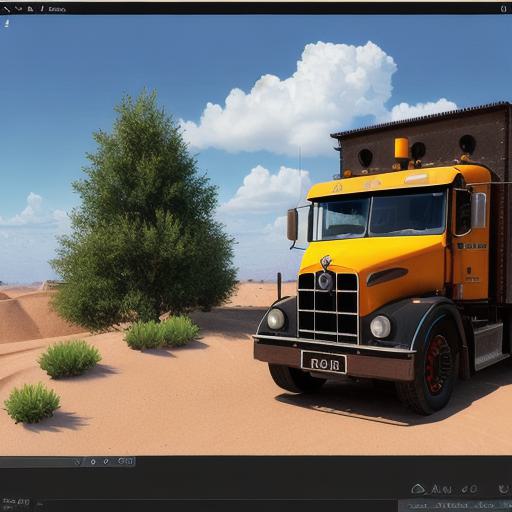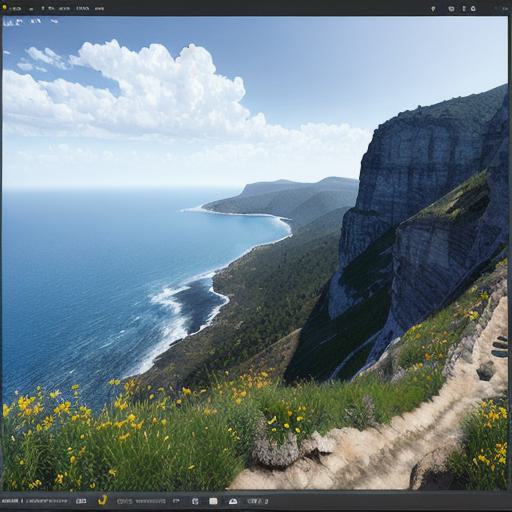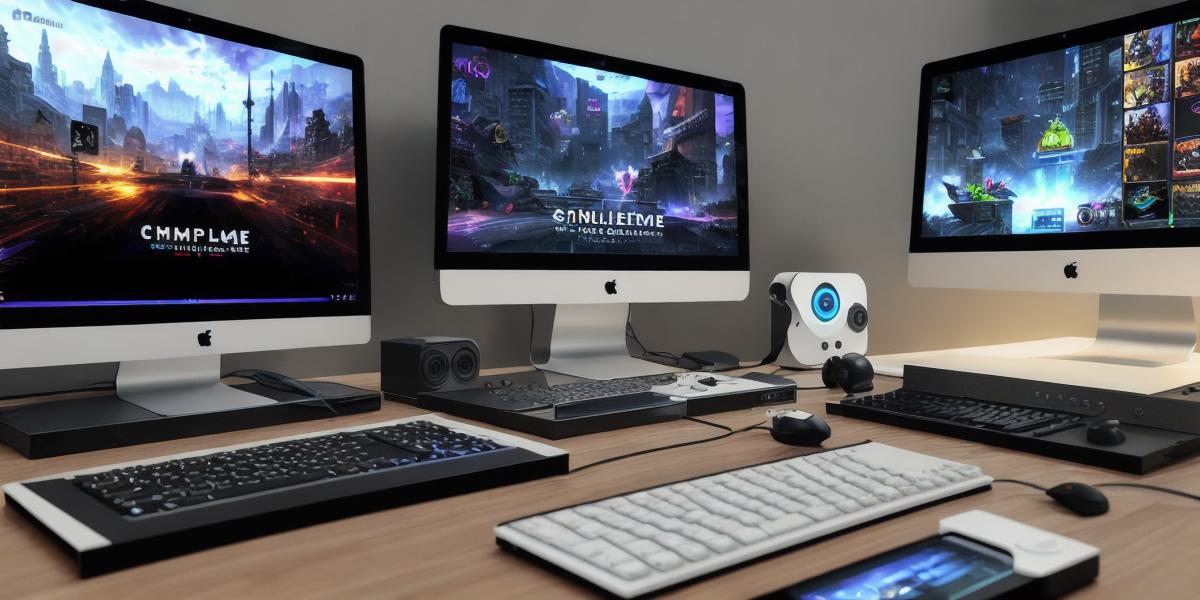Title: The Top 10 Game Development Tools for 2023: Innovative and User-Friendly Solutions to Create Stunning Games
Are you looking for innovative and user-friendly game development tools to create stunning games in 2023? Look no further! In this article, we will explore the top 10 game development tools available in the market today, highlighting their features, strengths, and weaknesses. From 2D and 3D game engines to programming languages and software development kits (SDKs), these tools are designed to help game developers of all levels create engaging and immersive games that will captivate audiences worldwide.
Before we dive into the list of top game development tools, let’s first discuss what makes a great game development tool. A good game development tool should be easy to use, scalable, flexible, and offer robust features that enable developers to create high-quality games. Additionally, it should provide excellent support, documentation, and community resources to help users overcome challenges and stay up-to-date with the latest developments in the industry.
Now that we have a clear understanding of what makes a great game development tool let’s take a look at our top 10 picks for 2023:
- Unity 3D
Unity 3D is one of the most popular game engines on the market, with millions of developers using it to create everything from simple 2D games to complex 3D experiences. Unity offers a wide range of features and tools that enable developers to create games for multiple platforms, including PC, mobile, console, and AR/VR. It also supports C and JavaScript programming languages, making it easy for developers to build games using their preferred language.
One of the key strengths of Unity is its flexibility and scalability. Developers can start with basic templates and expand as they need to create more complex games. Additionally, Unity offers a vast library of assets, plugins, and tools that help streamline development and reduce the time-to-market for games.
However, one of the downsides of Unity is that it can be resource-intensive, especially when working with high-quality 3D graphics. Additionally, it can be challenging to optimize performance, which can be a significant issue in mobile and low-end systems.
- Unreal Engine 5
Unreal Engine 5 is another popular game engine that has gained widespread adoption among developers. It offers a powerful set of tools and features that enable developers to create stunning 3D games with high-quality graphics, physics, and animation. One of the key strengths of Unreal Engine is its support for real-time ray tracing, which allows for more realistic lighting effects and shadows in games.
Unreal Engine also offers a wide range of development tools, including scripting languages, visual scripting, and an intuitive editor that simplifies game creation. Additionally, it has excellent community resources and support to help users overcome challenges and stay up-to-date with the latest developments in the industry.
However, one downside of Unreal Engine is that it can be more challenging to learn and use than some other game engines, especially for beginners. It also requires a significant amount of system resources, which can be an issue on lower-end systems.
- Construct 3
Construct 3 is a popular game development platform that allows developers to create games without writing any code. It offers a drag-and-drop interface that simplifies game creation and enables developers to focus on designing their game’s logic and mechanics. Construct 3 also supports 2D and 3D graphics, physics, and animations, making it suitable for creating both simple and complex games.
One of the key strengths of Construct 3 is its ease of use and accessibility. Developers can start building games in minutes, and there is no need to have any programming experience. Additionally, Construct 3 offers a vast library of pre-built assets, templates, and plugins that simplify development and reduce the time-to-market for games.
However, one downside of Construct 3 is that it may not be suitable for developers who prefer to work with code or who need more control over their game’s behavior. It also has limited support for advanced graphics techniques such as real-time ray tracing.
- Godot
Godot is an open-source game engine that offers a powerful set of features and tools for creating 2D and 3D games. It supports C++, GDScript, and Python programming languages, making it easy for developers to build games using their preferred language. Godot also has excellent support for physics, animation, and visual effects, making it suitable for creating engaging and immersive games.
One of the key strengths of Godot is its open-source nature, which allows developers to contribute to the project and customize it to meet their specific needs. Additionally, Godot offers a user-friendly editor and a vast library of plugins and assets that simplify development and reduce the time-to-market for games.
However, one downside of Godot is that it has a steeper learning curve than some other game engines, especially for beginners. It also has limited support for real-time ray tracing, which may be an issue in creating high-quality 3D graphics.
- Stencyl

Stencyl is another popular game development platform that allows developers to create games without writing any code. It offers a drag-and-drop interface that simplifies game creation and enables developers to focus on designing their game’s logic and mechanics. Stencyl also supports 2D graphics, physics, and animations, making it suitable for creating both simple and complex games.
One of the key strengths of Stencyl is its ease of use and accessibility. Developers can start building games in minutes, and there is no need to have any programming experience. Additionally, Stencyl offers a vast library of pre-built assets, templates, and plugins that simplify development and reduce the time-to-market for games.
However, one downside of Stencyl is that it may not be suitable for developers who prefer to work with code or who need more control over their game’s behavior. It also has limited support for advanced graphics techniques such as real-time ray tracing.
- PlayCanvas
PlayCanvas is a cloud-based game development platform that enables developers to create games using HTML5 and WebGL technologies. It offers a powerful set of features and tools for creating 2D and 3D games, including physics engines, animation tools, and visual effects. One of the key strengths of PlayCanvas is its scalability, allowing developers to build games that can run on any device with a web browser.
One of the downsides of PlayCanvas is that it requires an internet connection to work, which may be a significant issue for some developers, especially those who need to create offline games. Additionally, it has limited support for advanced graphics techniques such as real-time ray tracing.
- Blender
Blender is a popular open-source 3D modeling and animation software that can also be used for game development. It offers a vast set of features and tools for creating high-quality 3D models, animations, and textures. One of the key strengths of Blender is its flexibility and customizability, allowing developers to create unique and innovative games.
However, one downside of Blender is that it has a steep learning curve, especially for beginners. It also requires significant system resources, which may be an issue on lower-end systems. Additionally, there may be limited support for real-time graphics techniques such as real-time ray tracing.

- Twine
Twine is a popular game development platform that enables developers to create interactive storytelling games using hyperlinks and simple code. It offers a user-friendly interface and a vast library of assets, templates, and plugins that simplify development and reduce the time-to-market for games.
One of the downsides of Twine is that it may not be suitable for developers who prefer to work with more advanced graphics or game engines. Additionally, it has limited support for real-time graphics techniques such as real-time ray tracing.
- Unity
Unity is a popular game engine that offers a vast set of features and tools for creating 2D and 3D games. It supports C and JavaScript programming languages, making it easy for developers to build games using their preferred language. One of the key strengths of Unity is its scalability, allowing developers to create games that can run on any device.
However, one downside of Unity is that it requires a significant amount of system resources, which may be an issue on lower-end systems. Additionally, it has limited support for advanced graphics techniques such as real-time ray tracing.
- CryEngine
CryEngine is a powerful game engine that offers a vast set of features and tools for creating high-quality 3D games. It supports C++ programming language, making it suitable for developers who prefer to work with code. One of the key strengths of CryEngine is its realism and visual fidelity, making it suitable for creating engaging and immersive games.
However, one downside of CryEngine is that it has a steep learning curve, especially for beginners. Additionally, it requires significant system resources, which may be an issue on lower-end systems. It also has limited support for real-time graphics techniques such as real-time ray tracing.
Conclusion
In conclusion, there are many game development platforms and engines available that offer a variety of features and tools for creating engaging and immersive games. The choice of platform or engine will depend on the developer’s experience level, preferred programming language, and the type of game they want to create. It is important to carefully evaluate each platform or engine before making a decision to ensure that it meets your specific needs and requirements.



